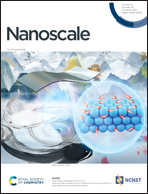Histone methyltransferase G9a inhibitor-loaded redox-responsive nanoparticles for pancreatic ductal adenocarcinoma therapy
Abstract
Survival data have shown little therapeutic improvement in pancreatic ductal adenocarcinoma (PDAC) over the past several decades, mostly due to aggressive growth and resistance to therapy. Glutathione (GSH) depletion in PDAC may serve as a strategy to suppress tumour malignancy and sensitize tumour cells to therapy. Herein, novel L-cysteine-based poly(disulfide amide) polymers were fabricated to deliver a histone methyltransferase G9a inhibitor (UNC0638) that can simultaneously block GSH biosynthesis and clear cellular GSH levels in PDAC. The optimal UNC0638 nanodrug (NPUNC0638) had the desired particle size, reasonable drug loading capacity, and GSH-controlled drug release. Moreover, compared to UNC0638 alone, NPUNC0638 showed better efficacy in inhibiting cell viability, arresting the cell cycle, inducing apoptosis, and suppressing the invasion and self-renewal capacity of PDAC cells. Furthermore, NPUNC0638 was found to be tumour-specific and well tolerated with no apparent toxicity to vital organs and haematopoietic stem and progenitor cells. Additionally, treatment with NPUNC0638 provided favourable outcomes in the PDAC xenograft model. Therefore, this work presents a potent drug delivery platform to overcome the GSH-induced malignant potential of PDAC.



 Please wait while we load your content...
Please wait while we load your content...